Sorted by date Results 1 - 25 of 52
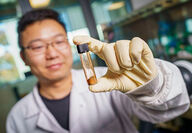
Recent studies pay off with major improvements in charging times and conductivity in solid-state lithium-sulfur battery technology. A flurry of scientific advances from Australia to California in recent months could soon propel lithium-sulfur (Li-S) batteries into direct competition with their lithium-ion cousins. Researchers at the University of Adelaide, Tianjin University in China, and the Australian Synchrotron recently reported results of a study that suggests the next...

German, US scientists work to commercialize energy storage systems designed to offset fluctuations in renewable power production. Researchers at Karlsruhe Institute of Technology (KIT) in Germany are developing a high-temperature heat storage system that employs liquid-metal technology to enhance the use of renewable energy sources. Highly conductive liquid metals can be heated to more than 700 degrees Celsius (1,290 degrees Fahrenheit) using green electricity to flexibly...
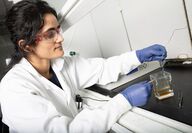
Georgia Tech researchers forge copper-infused, nanotextured stainless-steel material to stem rising tide of deadly infections. Researchers at Georgia Institute of Technology have created a stainless-steel alloy infused with copper to prevent bacterial infections caused by surface contamination. The new metal has potential to be used to create an effective, scalable, and sustainable solution to the growing threat of deadly antibiotic-resistant microbes adhering to surfaces in...

Stanford researchers identify low-cost method to extend the life of lithium-metal batteries and increase range of EVs by up to 600 miles. Electric vehicles may soon run on lithium-metal (Li-metal) batteries with ranges that could double the capacity of batteries currently used by EV manufacturers, according to a recent study completed by Stanford University researchers. The scientists published an article about their discovery, "Recovery of isolated lithium through discharged...

Spurred by government and private incentives, innovators and engineers overcome obstacles to proliferation of green technology. Wind energy – long considered by many, including some environmentalists, as a viable alternative to fossil fuels – is living up to its promise, thanks to government initiatives and technological innovations. Despite the technology's promise to deliver clean and cheap energy that reduces the United States' dependence on fossil fuels with minimal imp...
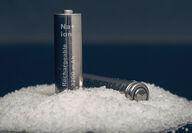
The world's transition away from fossil fuels to sustainable green energy sources is rapidly increasing the demand for economical storage methods that has thus far centered on lithium-ion batteries. The limited availability in the West of lithium and other critical metals, such as cobalt and rare earth elements, raises significant concern about the sustainability of the lithium-ion technology. One potential alternative may be the sodium-ion battery. According to the European...

The start of ExxonMobil's new lithium production unit in southwestern Arkansas in mid-November highlights rapidly growing industry interest in producing the white mineral from the briny aquifers that proliferate in this region of the United States. Lithium is a crucial component in the manufacture of batteries needed for electric vehicles, and demand for the white mineral is projected to quadruple by 2030. ExxonMobil said its new unit is expected to begin producing the white...

A team of researchers led by chemists at San Jose State University has solved the puzzle of how silica-coated nanodiamonds are formed and acquire properties that make them useful in an increasing number of scientific applications. In an article published in the Sept. 15 edition of ACS Nanoscience Au, the researchers described the results of their investigation into the chemistry of silica coatings on nanodiamonds. The study was aimed at helping scientists improve the shells...

Moving to seize opportunities presented by a rapidly emerging manufacturing sector in the cybersecurity industry, graphene maker HydroGraph Clean Power Inc. is teaming up with Kansas-based EMP Shield Inc., a leader in protecting devices from destructive interference caused by electromagnetic airwaves. Under the collaboration, the companies aim to develop advanced electromagnetic interference shielding products using HydroGraph's high-purity graphene. Electromagnetic interferen...
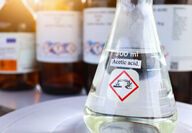
As researchers around the world race to develop more efficient ways to remove carbon dioxide emissions from the atmosphere, several recent breakthroughs hold promise for slowing the pace of global climate change. The pressing need to combat the ongoing climate crisis and reduce CO2 emissions has driven researchers to explore carbon capture and utilization since the late 20th century. As the challenge of carbon capture looms, various attempts to store excess carbon dioxide...

Rio Tinto and Sumitomo Corp. have teamed up to build a demonstration plant aimed at reducing greenhouse gas emissions from the production of aluminum. The A$111.1 million (US$73.9 million) pilot project, the first of its kind deployment of hydrogen calcination in the world, will be built in Australia at the Yarwun Alumina Refinery in Gladstone, Queensland. The project, co-sponsored by the Australian Renewable Energy Agency (ARENA), which contributed A$32.1 million (US$21.3 mil...

Researchers from the University of Oxford have figured out how lithium solid-state batteries fail, an advance that could lead to the development of more efficient batteries for electric vehicles and aviation. Scientists at the Faraday Institution in Oxford's Departments of Materials, Chemistry, and Engineering Science used advanced imaging techniques to determine the causes of failure in Li-SSBs, according to a study described in the June 7 edition of Nature. Unlike...

HydroGraph Clean Power Inc., a manufacturer of high-quality nanomaterials, has cleared a new milestone in the field of energy storage, according to a study published recently in the Journal of Electrochemical Energy Conversion and Storage. HydroGraph reported May 24 that its graphene surpassed the performance of the leading cathode carbon materials in a lithium-oxygen battery test. Lithium-oxygen, Li-O2, batteries have emerged as one of the world's most promising energy...

Researchers at The University of Queensland's Australian Institute for Bioengineering and Nanotechnology in Brisbane have developed a small sensor made from gold film that is both flexible and sensitive enough to enable a more streamlined future for electronic medical implants and real-time sensing applications. Principle investigators, Mostafa Kamal Masud, Ph.D., and Ph.D. candidate Aditya Ashok, used a new engineering approach that represents a breakthrough in the field of...

Solid and durable, concrete is the second-most consumed material on Earth, surpassed only by water. The gray, porous building material is also the foundation of modern infrastructure. But concrete leaves a hefty carbon footprint on the environment. During its manufacture, large quantities of carbon dioxide are released into the atmosphere, both as a chemical byproduct of cement production and in the energy required to fuel the process. Despite its advantages, which include...
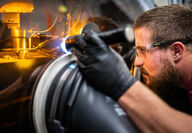
In the emerging field of additive manufacturing, researchers from Sandia National Laboratories in Albuquerque, N. M., have developed a material that could significantly reduce carbon emissions from electricity-generating power plants. The Sandia scientists, collaborating with researchers at Ames National Laboratory, Iowa State University, and Bruker Corp., used metal 3D printing, also called additive manufacturing, to create a high-performance metal alloy, or superalloy, with...

Tungsten alloys could endure extreme temps for carbon-free energy technology. The International Thermonuclear Experimental Reactor (ITER) project recently reported hitting significant snags in its quest to prove the feasibility of fusion as a large-scale and carbon-free source of energy. Fusion entails forcing together the nuclei of light atomic elements in a super-heated plasma, held by powerful magnetic forces in a doughnut-shaped chamber called a "tokamak." By fusing the...

Researchers at Georgia Institute of Technology may have identified the material that will replace silicon in the next generation of tinier and more efficient computer chips. With silicon nearly maxed out in its ability to accommodate faster computing, scientists say a new large nanoelectronics platform is needed, now more than ever. In the search for a material that could replace silicon, graphene has seemed promising for decades. But its potential reportedly faltered along...

Hoping to gain insights into processes that would create longer-lasting batteries and lighter vehicles, scientists at Pacific Northwest National Laboratory in Washington are investigating the effects of physical forces on metals at the atomic level as they undergo shear deformation. Shear deformation occurs when an object changes shape when forces are applied to it but not in the way of just becoming longer or shorter. The PNNL researchers are taking a direct look at changes...

A team of researchers at Pennsylvania State University has developed a technology that enables electric vehicle batteries to obtain a full charge in just 10 minutes. The breakthrough in EV battery design, reported in the Oct. 12 edition of the journal Nature, produced a record-breaking combination of a shorter charge time and more energy acquired for a longer travel range. "The need for smaller, faster-charging batteries is greater than ever," said Chao-Yang Wang, the William...
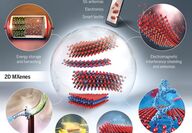
Researchers at Drexel University in Philadelphia have succeeded in using a new method of analysis to peel back the atomic layers of two-dimensional metallic compounds known as MXenes (pronounced max-eens), opening the door to development of a wide range of new materials. Two-dimensional materials are substances with a thickness of a few nanometers or less. Electrons in these materials are free to move in the two-dimensional plane, but their restricted motion in the third...
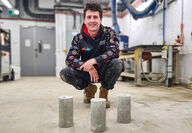
Researchers at Royal Melbourne Institute of Technology School of Engineering have found that disposable personal protective equipment can be used as reinforcement materials in making structural concrete. Their studies, which followed earlier work on the recycling of used rubber tires, demonstrated that using shredded PPE – discarded isolation gowns, masks, and nitrile gloves – could increase the strength of concrete by 22% and improve its resistance to cracking. The RMIT tea...

For years, researchers have sought a viable method for making the common zinc alkaline battery rechargeable. Now, a team of international researchers has developed a technique for doing just that. Prolonged research led the scientists to develop a new electrode design that is set to enable the rechargeability of alkaline zinc, one of the most common types of non-rechargeable batteries used in our daily lives. The technique also sheds light on a potentially wider application of...

HydroGraph Clean Power Inc., a commercial manufacturer of high-quality nanomaterials and alternative-energy fuels, reported June 23 the opening of a 13,000-square-foot manufacturing facility for graphene and other products in Manhattan, Kansas. Using its patented Hyperion detonation process, the company intends to produce high-quality graphene in what it describes as a low-cost and environmentally friendly manner due to low energy consumption and the absence of emissions....
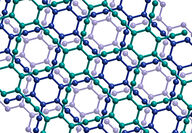
Though scientists have tried with limited success for more than a decade to synthesize a new form of carbon called "graphyne," a team of researchers at the University of Colorado Boulder has finally succeeded in creating the material in bulk. Graphyne has long interested the scientific community because of its similarities to graphene, another form of carbon highly valued by industry. Yet despite decades of work and theorizing, only a few fragments of graphyne have ever been...